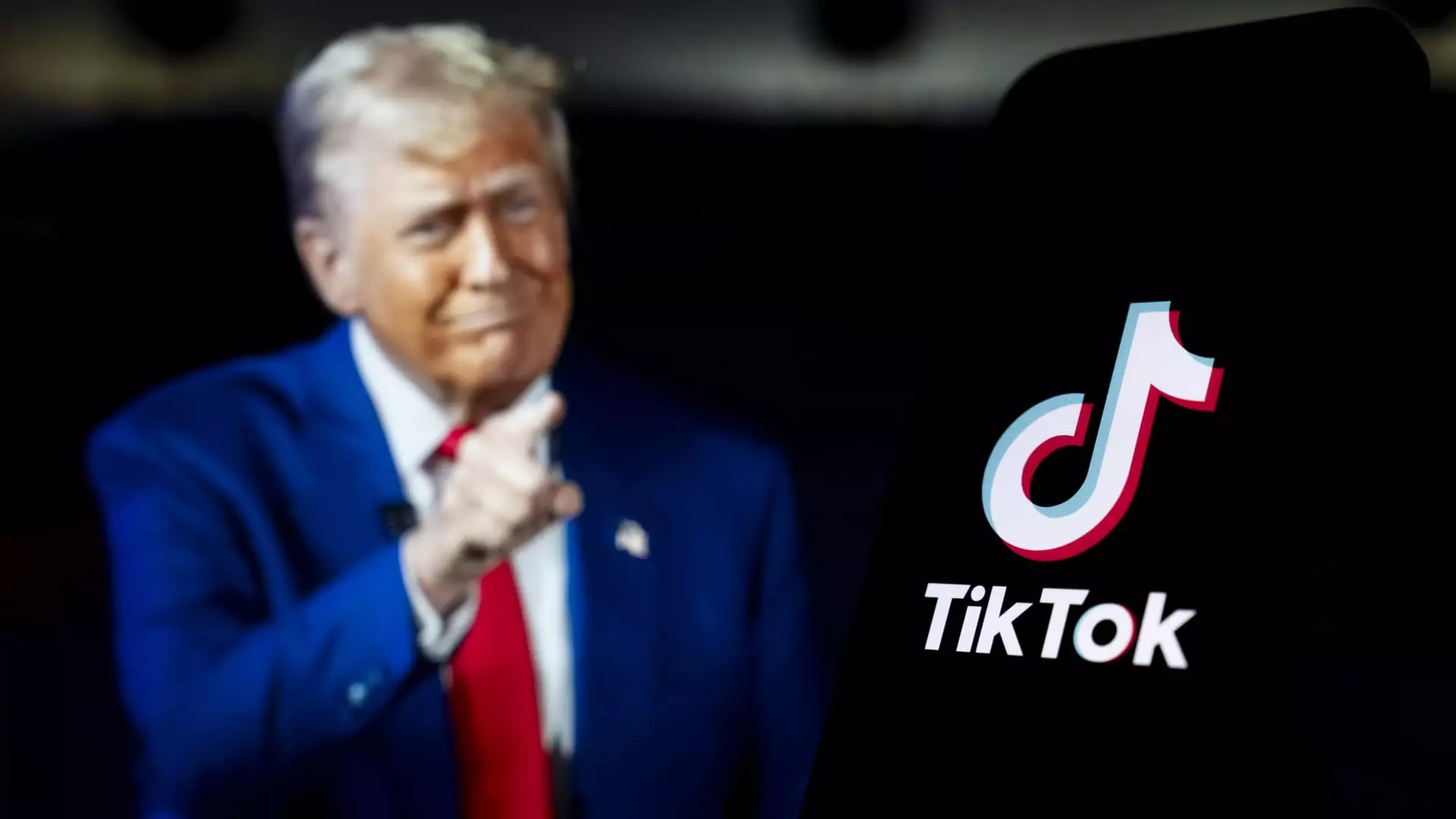The recent fluctuation in TikTok’s usage patterns reflects a broader narrative concerning the app’s resilience amid regulatory pressures and shifting consumer behaviors. Following a brief service shutdown in the United States, user engagement on TikTok has rebounded significantly, revealing insights into both the platform’s staying power and the adaptability of its content creators. While the temporary suspension based on legislative decisions raised questions about its long-term viability, TikTok’s rapid recovery underscores the dynamic interplay between digital platforms and user loyalty.
Cloudflare Radar, a tool that tracks global internet trends, reported an 85% decline in TikTok traffic correlating with its 14-hour shutdown earlier this month. This drastic drop was precipitated by a Supreme Court decision that upheld a law compelling the app’s parent company, ByteDance, to divest its holdings or face an effective ban. Despite this serious threat, TikTok made a swift comeback, with usage levels now just about 10% below what they were prior to the ban. This quick recovery signals that the platform’s robust user base remains engaged, often viewed as a testament to TikTok’s unique appeal and the loyalty it has cultivated among its users.
The brief exit from the digital landscape prompted spikes in engagement across alternative platforms, exemplifying the way competition can provide both opportunities and pressures. RedNote (Xiaohongshu) saw increased traffic, further indicating that users are not solely reliant on a single platform for their content consumption. However, TikTok’s ability to regain its audience shortly after reactivation raises pertinent questions about brand loyalty and the extent to which creators and consumers are intertwined with a single app.
The uncertainty surrounding TikTok has catalyzed many creators to diversify their online presence. Dylan Lemay, a successful TikTok personality, openly stated that he has prepared for the potential of the app becoming obsolete. By focusing on building a presence on platforms like YouTube, where he has garnered 5.6 million subscribers, Lemay is ensuring that he has a sustainable career path regardless of TikTok’s future. This proactive approach illustrates the strategies that content creators must deploy to safeguard their livelihoods amidst an unpredictable digital horizon.
Contrastingly, some creators, such as Noah Glenn Carter, noted challenges in replicating their TikTok success on platforms like Instagram and YouTube. Despite the vast audience available on these platforms, Carter’s experience shows that not all content translates seamlessly to different mediums. This disparity highlights the embedded communities and specific engagement dynamics that characterize TikTok, enabling unique creator–audience relationships that are difficult to replicate elsewhere.
With TikTok’s future in regulatory limbo, brands have begun reassessing their partnerships with creators. As reported, many are opting to pivot their strategies to accommodate a broader array of platforms. This shift could significantly alter the financial landscape for creators reliant on brand deals, especially if TikTok were to dissolve entirely. The tension between creators’ need for stability and brands’ instinct to seek the most lucrative platforms illustrates the precarious balance existing in the creator economy.
As brands attempt to navigate this uncertain terrain, recent reports suggest that Meta is actively courting creators from TikTok to promote Instagram. This competitive outreach symbolizes a broader strategy among social media platforms to capture and retain creators amidst the dialogue surrounding TikTok’s potential ban. For many creators, the reality of a diversified approach to brand partnerships has become increasingly apparent; their financial success may hinge on these adaptive strategies as the platforms evolve.
As the landscape continues to shift, creators and audiences alike grapple with the uncertain future of TikTok. For others like Michael DiCostanzo, there remains an undercurrent of optimism regarding the app’s longevity. Many creators express disbelief that the platform could genuinely be removed, emphasizing the unique sense of community and creativity that TikTok fosters. This sentiment reveals an inherent connection not just to the app itself but also to the culture that has blossomed within it.
While TikTok’s recent upheavals and recovery reveal both vulnerabilities and strengths, its ecosystem of creators showcases an adaptability that reflects broader trends in digital content creation. The resilience of these individuals amid uncertainty underscores a fundamental truth about online platforms: where there’s community, there’s a way. As the digital landscape evolves, the interplay between platforms, creators, and audiences will undoubtedly shape the future of social media, emphasizing the importance of flexibility and innovation for sustained success.


Leave a Reply
You must be logged in to post a comment.